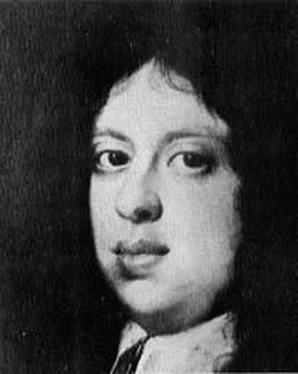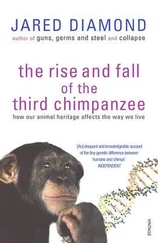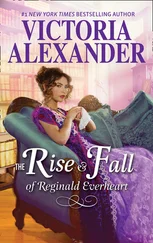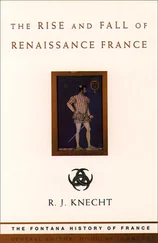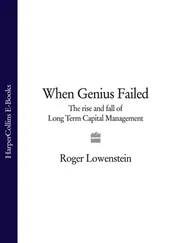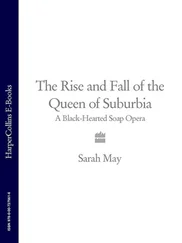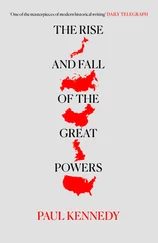2. There has been a bridge where the PONTE VECCHIO now stands since Roman times. The present structure, which replaced a twelfth century bridge destroyed by the floods of 1333, was built in 1345. At that time most of the shops on the bridge were occupied by tanners and pursemakers. The butchers who succeeded them were replaced by goldsmiths and jewellers at the end of the sixteenth century on the orders of Grand Duke Ferdinando I.
3. ORSANMICHELE derives its name from the ancient oratory of San Michele in Orto which originally occupied the site. The present building, started in 1336, was designed for use as a communal granary as well as a chapel. The statues in the niches along the outside walls were commissioned by the city’s guilds. The original of Donatello’s marble St George which was made for the Armourers’ Guild, and a copy of which stands in the most westerly niche on the northern wall, is now in the Bargello.
4. The MERCATO VECCHIO was demolished at the end of the nineteenth century to make way for the present Piazza della Repubblica.
5. VIA CALIMALA which literally means Street of Ill Fame is perhaps a corruption of the Roman Callis Major.
6. The church and convent of SANTA CROCE in the Piazza Santa Croce was built between 1228 and 1385. In 1863, the distinctive marble façade was added to a seventeenth-century design. The tombs of Michelangelo and of Cosimo de’ Medici’s friends Leonardo Bruni, Carlo Marsuppini and Vespasiano da Bisticci are all here; as also are the chapels of several of the leading families of Florence, including those of the Bardi family into which Cosimo married. The Novices’ Chapel was built for Cosimo by Michelozzo in about 1445.
7. The BARGELLO known as the Palazzo del Podestà in the fifteenth century was originally built as the city hall in 1254–5. It was reconstructed in the middle of the fourteenth century when the stairway in the courtyard was built. In 1574 it became the residence of the Chief of Police. It is now the Museo Nazionale and contains many busts and statues of the Medici family as well as works of art commissioned by them.
8. The Alberti family palace in the Via de’ Benci (no. 6) is now the MUSEO HORNE. The Alberti were responsible for the chancel in Santa Croce.
9. The PALAZZO RUCELLAI, which was finished in the 1450s, is in the Via della Vigna Nuova (no. 18). It was built by Bernardo Rossellino after a design by Leon Battista Alberti. Alberti was also commissioned by Giovanni Rucellai to design the façade of the Dominican church of Santa Maria Novella which contains the Rucellai chapel. Part of the restored Rucellai gardens, the ORTI ORICELLARI, can be seen between the railway station and the Porta al Prato.
10. Niccolò da Uzzano lived in the Via de’ Bardi in the palace now known as the PALAZZO CAPPONI (no: 36).
1. The number of palle (or balls) on the MEDICI EMBLEM was never fixed. Originally there were twelve; but there were usually seven in Cosimo de’ Medici’s time – as on the shield on the south-east corner of the Medici palace – though there are only six at the corners of Verrocchio’s roundel in the chancel at San Lorenzo. There are eight on the ceiling of the old sacristy at San Lorenzo, five on Duke Cosimo’s tomb in the Capella dei Principi and six on the Grand Duke Ferdinando’s arms on the entrance to the Forte di Belvedere.
2. Work on the Cathedral of SANTA MARIA DEL FIORE, known as the DUOMO, was begun towards the end of the thirteenth century to a design by Arnolfo di Cambio. Brunelleschi’s dome was not finished until 1436 and the exterior was still not completed when he died ten years later. The neo-Gothic façade is late-nineteenth-century (see note 13 to Chapter XIII).
3. The Via Porta Rossa was then dominated by the PALAZZO DAVANZATI (no:9). At that time it was owned by the Davizzi who had built it in about 1330. It is now a museum.
4. The MERCATO NUOVO, now known as the Straw Market, was built by Giovanni Battista del Tasso in 1547–59.
5. The FLORENTINE LILY appears less frequently on the buildings of Florence than the palle of the Medici. One example is on the fifteenth-century doorway of the old Mint behind the Loggia dei Lanzi.
6. The Dominican church and monastery of SANTA MARIA NOVELLA was begun in the middle of the thirteenth century and finished in the sixteenth. The apartments which were built for Pope Martin V overlook the Chiostro Grande. The interior of the church was redecorated by Vasari in the 1560s. The Rucellai, Bardi and Strozzi all built chapels here. A chapel in the Chiostro Grande was redecorated for the visit of Giovanni di Lorenzo de’ Medici, Pope Leo X, by Jacopo Carrucci Pontormo and Ridolfo Ghirlandaio in 1515.
7. The grim, late-thirteenth-century palace of the Spini family, now the PALAZZO SPINI-FERRONI is on the corner of Via Tomabuoni and Lungamo Acciaiuoli by the Ponte Santa Trinità. The next palazzo downstream is the fourteenth-century Palazzo Gianfigliazzi (see note 2 to chapter XVII). A few doors further down (Lungamo Corsini, 10) is the seventeenth-century PALAZZO CORSINI whose picture gallery is occasionally open to the public.
8. The monastery of Santa Maria degli Angeli has now been absorbed by the Hospital of Santa Maria Nuova. The octagonal chapel known as the ROTONDA DI SANTA MARIA ANGELI in the Via degli Alfani was started in 1434 to designs by Brunelleschi.
9. Tournaments were traditionally held in the PIAZZA SANTA CROCE where chariot races and the football game known as calcio were also played. A plaquedated 10 February 1565 marks the centre of the calcio field.
10. It was Palla Strozzi who commissioned Gentile da Fabriano to paint the altarpiece, the Adoration of the Magi , for the chapel of Palla’s father, the CHAPEL OFONOFRIOSTROZZI in the church of Santa Trinità. The altarpiece, which contains portraits of various members of the Strozzi family, is now in the Uffizi. The STROZZI CHAPEL in the Dominican church of Santa Maria Novella has an altarpiece by Andrea Orcagna and murals by Nardo di Cione. The Strozzi family villa of Poggio a Caiano was later acquired by Lorenzo il Magnifico.
11. The VIA DE’ BARDI was almost entirely redeveloped by the Bardi family. Before they built their palace (which no longer exists) the street was a slum known as the Borgo Pigiglioso (the Fleapit). The fourteenth-century BARDI CHAPEL in the church of Santa Croce contains murals by Giotto and his assistants.
12. Carlo di Cosimo de’ Medici was also a collector in a modest way. Roger vander Weyden’s Entombment , now in the Uffizi, was one of his pictures.
1. The medieval tower house of the ALBIZZI is in the Borgo degli Albizzi. The palazzo built by Rinaldo degli Albizzi no longer exists, PALAZZO ALTOVITI stands on its site at no. 88.
2. Domenico Veneziano’s Saints Francis and John the Baptist from the Cavalcanti chapel is in the MUSEO DELL’ OPERA DI SANTA CROCE. The Cavalcanti Annunciation by Donatello is in the church of Santa Croce.
3. The Studio Fiorentino has developed into the UNIVERSITÀ DEGLISTUDI. The present building near the Piazza San Marco was converted from the stables of the Grand Dukes of Tuscany. The botanical gardens to the north, the GIARDINO DBI SEMPLICI, which face onto the Via Lamarmora, were laid out on Cosimo I’s instructions in the middle of the sixteenth century.
4. IL TREBBIO stands at the top of a hill about a mile from Cafaggiolo where the Medici had owned property for generations. According to Vasari the original medieval fortress was altered for Cosimo by Michelozzo who made it less bleak by rebuilding the courtyard, adding the loggia and the covered passage round the ramparts and tower. It was sold by the Medici to Giuliano Serragli in 1644. In 1864 it passed into the hands of Prince Marcantonio Borghese and was later bought by Dott. Enrico Scaretti who restored it in the 1930s. His widow, Lord Gladwyn’s sister, is still living there at the time of writing.
Читать дальше
